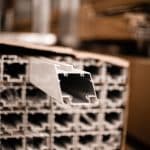You may be familiar with 3D printers and their increasing popularity in many industries, from manufacturing to architecture. But are you aware that 3D printing technology has entered medical field as well? Yes, it might sound like something out of a science fiction movie, but 3D bioprinting is a rapidly evolving technology that promises to revolutionize organ transplant procedures.
Using bioink filled with cells, this technology can print human tissue and, potentially, entire organs. It’s a process called bioprinting, and it could provide a solution to the shortage of organs available for transplantation. But how exactly does it work, and what are its implications for the future of organ transplants? Let’s delve deeper into this fascinating topic.
A lire aussi : How to generate leads using chatbots ?
The Science and Technology Behind Bioprinting
Before we get deep into the concepts of bioprinting, it’s essential to understand its basics. Bioprinting involves the use of 3D printing technology to print living cells. This process uses a special kind of ink, known as bioink, which consists of living cell clusters.
The bioink is loaded into a 3D printer, which is then used to print the cells in a precise, layered pattern. Through careful control of the environment, the printed cells are encouraged to grow and multiply, eventually forming functioning tissue or even an organ.
Avez-vous vu cela : Can DNA Data Storage Become a Viable Solution for the Exponential Growth of Digital Data?
The potential applications of bioprinting are vast, from printing skin for burn victims to eventually producing entire organs for transplantation.
The Potential of Printed Organs
The shortage of organ donors is a global issue. With bioprinting, we could potentially create an unlimited supply of organs, tailored to the patient’s body. This could eliminate long waiting lists for organ transplants and reduce the risk of organ rejection, as the organs would be printed using the patient’s own cells.
In addition to making organ transplantation more accessible, bioprinting also offers the potential for a more personalized approach to medicine. For instance, disease models could be printed to test the effectiveness of new drugs before they are used in human trials.
However, creating entire organs is a complex process. While scientists have made significant progress in printing simpler tissues such as skin and cartilage, printing more complex organs like the heart or liver still presents a significant challenge.
Bioprinting Skin and Simpler Tissues
Printing skin tissue is arguably the most developed application of bioprinting technology. This is because the structure of skin is relatively straightforward compared to other organs. Skin tissue consists of a few different cell types arranged in a fairly simple pattern, making it an ideal candidate for bioprinting.
Bioprinted skin has numerous applications in the medical field. For instance, it can be used to treat severe burn victims. Instead of relying on skin grafts, which can be painful and carry the risk of infection or rejection, doctors could potentially use bioprinted skin that perfectly matches the patient’s own tissue.
The Future Challenges of Bioprinting
While the potential of 3D bioprinting is undoubtedly exciting, it’s crucial to remember that this technology is still in its early days. There are many technical challenges to overcome before we can print complex organs like the heart.
One challenge is vascularization, which is the process of forming the blood vessels needed to supply the organ with nutrients and oxygen. Printing the small, intricate network of blood vessels found in organs such as the heart or liver is a significant hurdle.
Furthermore, there are ethical and regulatory challenges to consider. As with any disruptive technology, the legal and ethical frameworks will need to evolve to keep pace with the rapid advancements in the field.
Despite these challenges, the promise of 3D bioprinting is enormous. It could revolutionize organ transplants, making them more accessible and less risky. With ongoing research and development, the day when we can print a human heart might be closer than we think.
Regulatory and Ethical Implications of 3D Bioprinting
As with any new medical innovation, 3D bioprinting brings with it a plethora of ethical and regulatory considerations. The technology has the potential to save countless lives, but it also raises questions about who will have access to these bioprinted organs, and how they will be allocated.
Moreover, the use of bioink composed of human cells raises concerns about consent. If a person’s cells are used to create bioink, do they retain ownership over those cells and any tissues or organs printed with them? Who is responsible if something goes wrong during the bioprinting process or after the organ has been transplanted?
Regulatory bodies around the world are already grappling with these questions. It’s clear that as the technology advances, our laws and ethical guidelines will have to evolve alongside it to ensure the safe and equitable use of 3D bioprinting.
Regenerative Medicine and Tissue Engineering with 3D Bioprinting
The field of regenerative medicine is increasingly turning to 3D bioprinting as a solution for creating viable human tissues and organs. Regenerative medicine aims at repairing or replacing tissue and organ function lost due to age, disease, damage or congenital defects. While traditional methods of regenerative medicine often involve the use of donor organs or artificial prostheses, these approaches come with their own set of challenges.
3D bioprinting provides an innovative solution to these problems. By using a patient’s own cells as the basis for the bioink, bioprinting avoids the issue of organ rejection that plagues traditional transplant procedures. Additionally, 3D bioprinting holds the potential to alleviate the global shortage of donor organs.
However, successfully bioprinting functional organs is an intricate process. Key steps in this process involve the use of tissue engineering, a field that combines biology, medicine, and engineering to create tissues that can restore, maintain, or improve tissue function.
In particular, tissue engineering plays a crucial role in the bioprinting of complex organs like the heart or liver. Such organs have a complex structure and comprise many different cell types, each with specific roles. These cell types must be precisely arranged to function correctly, a task that requires the precise control provided by 3D bioprinting technology.
Stem Cells and Their Role in 3D Bioprinting
Stem cells are a critical component of bioprinting. These cells have the unique ability to develop into various cell types, making them a versatile tool in the creation of a broad range of tissues and organs.
In the context of 3D bioprinting, stem cells can be used to create the bioink that forms the basis of the printed organs. By manipulating these cells in a laboratory, scientists can encourage them to differentiate into the specific cell types needed for each organ.
However, the use of stem cells in bioprinting is not without its challenges. Controlling the differentiation of stem cells into the correct cell types and arranging them in the correct pattern requires a high degree of precision and control. Moreover, there are ethical considerations related to the use of stem cells, which need to be addressed.
Conclusion: The Promising Horizon of 3D Bioprinting in Organ Transplants
The advent of 3D bioprinting in the field of organ transplantation is undoubtedly a game-changer. It heralds a future where the agonizing wait for a compatible organ donor may become a thing of the past. However, it is critical to remember that this technology is still in its infancy, with many technical, ethical, and regulatory hurdles yet to be overcome.
Still, the potential benefits of 3D bioprinting are too significant to ignore. From personalized tissue models for drug testing to patient-specific organs that reduce the risk of rejection, the applications are vast and far-reaching.
As we continue to navigate the challenges presented by 3D bioprinting, we must also prepare for the inevitable ethical and regulatory questions that this technology will raise. It is clear that the legal and ethical frameworks guiding the use of bioprinting will need to mature alongside the technology.
In the words of Dr. Anthony Atala, director of the Wake Forest Institute for Regenerative Medicine, "The promise of 3D bioprinting is enormous, but so are the challenges. We need to continue research and clinical trials to understand how to best use this technology to benefit patients".
The future of regenerative medicine and organ transplants holds great promise, thanks to the revolutionary potential of 3D bioprinting. As we continue to explore this new frontier, we must also ensure that we navigate the path with caution, taking into consideration ethical implications and establishing robust regulatory frameworks. Nevertheless, the hopes are high that this technology will transform organ transplants, making them safer, more accessible, and more efficient.











